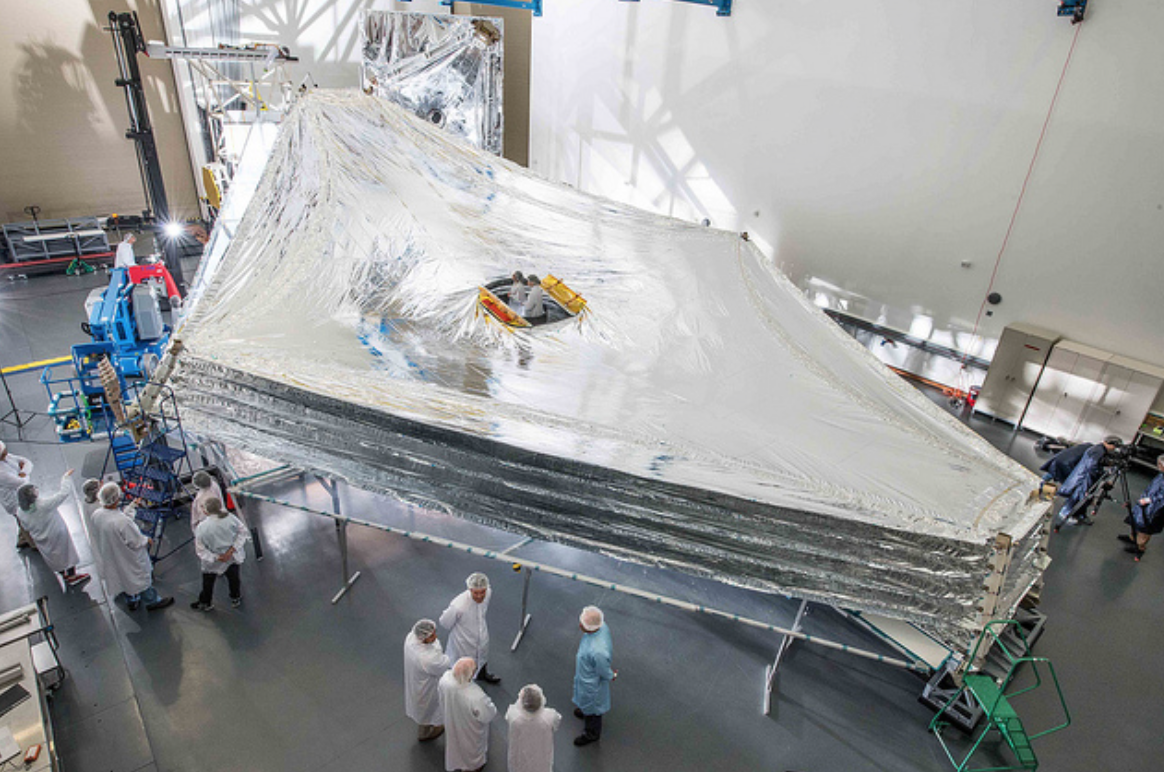
Successful full scale deployment and tensioning of the James Webb Space Telescope's five layer sunshield system, and inspection of the deployed hardware at Northrop Grumman. Credit: Chris Gunn/NASA

If there is a mechanical issue with the James Webb Space Telescope once it's in orbit there's no way that it can just pull over to the side of the road and lift up the hood and wait for a tow truck, not with this $8.8 billion satellite scientific spacecraft. Once it's up in the air, there's no way to repair it after its launch.
That's what makes it so imperative that those folks working on the Webb telescope need to determine what the cause was of an anomaly that occurred during a vibration test on December 3 at Goddard Space Flight Center in Greenbelt, Maryland. The satellite that will hopefully provide insights about the earliest days of the Universe is scheduled for launch from French Guiana in 2018 with a projected lifespan of between five- to 10-year mission in deep space. Because of the expense of the project, it's critical that it succeed, otherwise it could have negative effects on NASA's budget and other subsequent projects.
The question that needs to be answered is what caused the accelerometers attached to the telescope to detect anomalous readings during a particular test. Further tests to identify the source of the anomaly are underway. The engineering team investigating the vibration anomaly made numerous detailed visual inspections of the Webb telescope and found no visible signs of damage. They are continuing their analysis of accelerometer data to better determine the source of the anomaly. They have conducted a low-level vibration of the hardware to measure its responses, and are comparing the results with data obtained prior to the anomaly. Engineers are currently running diagnostics to determine the cause and to assess any potential impacts.
The oldest and most distant objects in the Universe that have the largest red shift are moving away from Earth the fastest and are best viewed in the infrared spectrum. The Webb telescope will specialize in the infrared and, therefore, should capture images of the Universe's first stars and galaxies, which formed only 200 million years.
"Further tests to identify the source of the anomaly are underway," the agency stated in an update. "The engineering team investigating the vibe anomaly has made numerous detailed visual inspections of the Webb telescope and has found no visible signs of damage. They are continuing their analysis of accelerometer data to better determine the source of the anomaly. They have conducted a low-level vibration of the hardware to measure its responses, and are comparing the results with data obtained prior to the anomaly. Engineers are currently running diagnostics to determine the cause and to assess any potential impacts."

